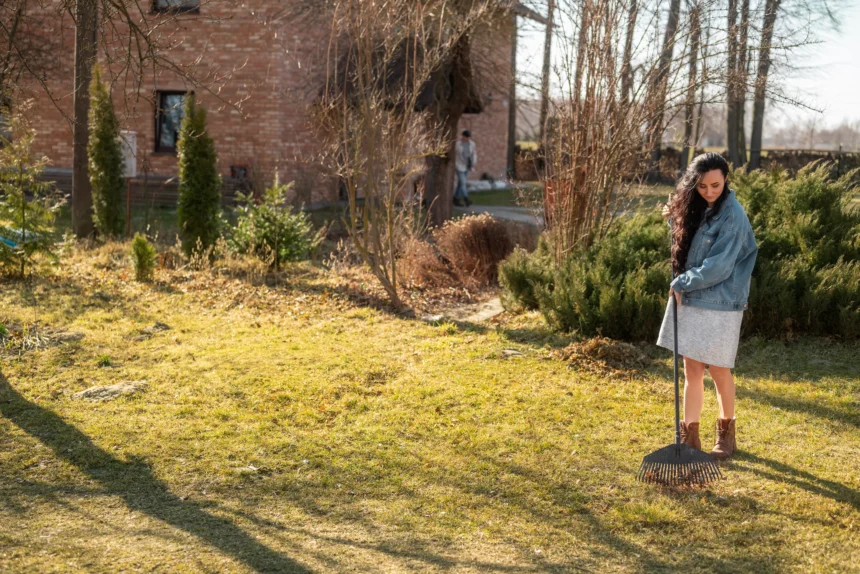Imagine that you’re stepping out to your backyard after a thunderous shower and it’s been turned into an extremely soggy mess, pools of water everywhere, muddy patches ruining your grass, and even the water might have started to find a route towards the foundation of your home. It is a common headache for many homeowners, especially in places where heavy rainfall or flash floods are rampant.
But with just a few smart landscaping tweaks, your yard can become a resilient oasis: beautiful yet able to shrug off any excess water like a pro. These are simple tricks without massive rework or setups with a lot of cash thrown in: fair, do-it-yourself ideas that bring beauty and function together. And in regions dealing with frequent natural disasters in Australia, where intense storms and flooding have become more common, these strategies can make a real difference in protecting your property. Let’s deep-dive into making your backyard flood-resistant yet homey and green.
Set up a rain garden to collect water naturally.
Creating a rain garden is a hands-on step toward natural disaster mitigation, as it channels stormwater away from vulnerable structures and reduces erosion. It is like a shallow depression in the yard, planted with bright flowers or grasses that are perfect for moist conditions. There is more to this than meets the eye; it strategically collects runoff from your roof, driveway, or lawn. While charging nature, rainwater hits the ground and is immediately served to the rain garden, from whence it slowly percolates instead of lying elsewhere.
To set up your rain garden:
- Select a low-lying spot that is at least 10 feet away from your home’s foundation to avoid channeling water too close.
- Set up the basin in an area about 6 to 12 inches deep, mixing in some compost-amended soil to promote soil absorption.
- Then, add native plants such as switchgrass, black-eyed Susans, or sedges, plants with deep roots that help to break up clay soil and draw in moisture.
In flood-prone areas, choose plants that can tolerate both wet and dry conditions so they remain healthy throughout the year. This also lessens flooding by up to 30% in some cases while attracting pollinators like butterflies and bees, creating a mini ecosystem in your backyard. The maintenance requires just occasional weeding and mulching. For areas with lots of rain, this might be a great technique for preventing the swampy feeling after a storm.
Keep Native Plants Ready
Speaking of plants, going native by ditching your regular turf is one of many simple tricks to curb floods. Native plants are acclimated to your local environment and thus do not require much additional water or fertilizer or maintenance, and yet offer much better flood protection. Their deep and broad root systems serve to anchor soils and take in huge volumes of rainfall, water far greater than shallower-rooted turfgrass.
Plant some elderberry shrubs or red maple trees in a few strategic locations around your yard to add height and privacy. These slow down water flow when it really hammers down. For ground cover, go with perennials like ferns or wild ginger, whose dense growth helps prevent erosion. The key is to cluster them instead of spreading them too widely so that their roots can intertwine to produce a strong underground network.
Homeowners who have made this transition commonly state their yards stay dry and free of puddles, with a bonus of aiding wildlife. It’s a win-win, a haven for birds and bugs in your backyard and less mowing time for you. If you need help deciding where to start, check with a local nursery for plants adapted to your soil type, they will recommend ones that do well with minimal effort.
Set Up French Drains for Discreet Water Management
If your yard has persistent wet spots, a French drain could be the undercover king for you. The process involves digging a trench filled with gravel and perforated piping that directs water away from the targeted wet areas. After installation, it is covered with soil and grass, making it attractive and inconspicuous.
Locate places of slope or low points that collect water, then dig a trench roughly 12 inches wide and 18 inches deep, sloping gently away from the house. Drape the pipe with landscape fabric to prevent mortar blocking and surround it with gravel to ensure water flows well. Direct the outlet to a safe area such as a streetside drain, or enter into a dry well.
It is able to take on a heavy rush of runoff and in this way keeps your yard dry, even after a softening downpour. This works especially if yards sit just adjacent to patios or driveways, where flooding is worse. The payment for an entire weekend or two of digging will prove to be well worth it when you wake up nearly mud-free every morning.
Pick Permeable Surface for Your Hardscapes
Hardscaping, including patios and walks, need not worsen flooding; indeed, choosing the right kind of materials might work to your advantage. Instead of being cast in solid concrete, consider pavers with plenty of spaces in between, gravel, or porous asphalt. This will minimise the high-volume water flowing into your yard and will keep on replenishing the water storage of the environs.
Interlocking pavers with holes filled with sand or fine gravel are quite beginner-friendly and come in many designs to complement one’s taste. For driveway surfaces, grass pavers are a consideration; while supporting functionality, this option qualifies as a green solution in its own right. Whereas these avert flooding incidents, they also help cool down the temperature in your yard by forbidding heat accumulation from impervious surfaces. Just picture setting that barbeque on a patio that doesn’t turn into a slip-and-slide once it rains on it, they’re practical and pretty!
Direct Water Away with Downspouts and Rain Barrels
A lead complaint for runoff is your roof, so thoughtful downspout management is key. Extend them for at least 5 feet from the foundation using flexible extensions or splash blocks, aiming towards absorbent surface areas such as gardens or lawns. To add some green cred, consider attaching rain barrels as well to collect runoff from the roof for reuse in watering plants.
The more or less basic setting for a rain barrel involves placing a screened barrel beneath a downspout, with an overflow hose directed towards a drain. It would collect hundreds of gallons per storm, alleviating the yard’s burden and providing free irrigation during dry spells. This is a simple addition that endorses water conservation while minimising erosion around your home. Pair with mulched beds to slow water even more and keep it retained in the soil.
Grade Your Yard for Better Flow
Water is aimed out of the house with a proper grading system and is usually the foundation of flood-proof landscaping. Regarding would take care of a yard that slopes towards the house by building up soil to make a slight outward pitch: a 2% slope, roughly a 2-inch drop over every foot.
Plot this on the level, a line marked with stakes, then lay on topsoil, which should be lightly compacted. Cover with seeding or turf for a perfect finish. This would keep water from pooling against walls and yet decrease chances for the basement becoming flooded. Should thereby be melded in major ways with others like drains or plants to be crowned with full protection.
Maintain Soil Health with Mulch and Aeration
Healthy soil is indeed a yard’s first line of defence, and thus mulch and aeration are not to be ignored. Apply a layer of organic mulch like wood chips all around the plants to keep the moisture intact, suppress weed growth, and hold soil during heavy rains to keep it from washing away. In this way, the mulch prevents soil erosion by cushioning the impact of heavy raindrops to a moderate level and allowing for slow infiltration.
Have aeration done in a compacted lawn annually wherein holes are punched into the soil to aid drainage; you could rent an aerator if your lawn is big or use a manual tool if it’s tiny and have fun with your own hands. This ensures that the rainwater (when it comes) actually helps to make plants stronger by allowing a good soak into the soil and also keeps the surface dry. Hence, soon your lawn shall be strong and resistant to any downpour.










 /home/u448362301/domains/theexpotab.com/public_html/wp-content/themes/foxiz/templates/popup.php on line 167
/home/u448362301/domains/theexpotab.com/public_html/wp-content/themes/foxiz/templates/popup.php on line 167